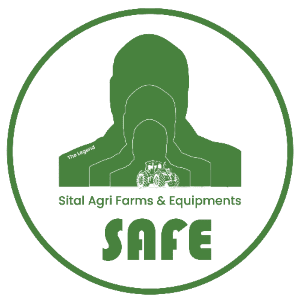Tractors are essential machinery in agriculture and construction, playing a vital role in farming and industrial operations. To maintain peak efficiency and longevity, it is crucial to use high-quality tractor spare parts. Selecting the right components enhances the machine’s performance and prevents costly breakdowns. This guide will explore the different types of tractor spare parts, their importance, and how to choose the best ones for optimal efficiency.
Types of Tractor Spare Parts
1. Engine Components: The engine is the heart of any tractor, and maintaining its components is crucial for performance. Key engine parts include:
- Pistons and Rings – Ensures smooth combustion and power output.
- Cylinder Heads and Blocks – Maintain compression and efficiency.
- Fuel Injectors and Pumps – Regulate fuel delivery for optimal performance.
- Oil Filters and Air Filters – Keep contaminants away and maintain cleanliness.
- Gaskets and Seals – Prevent leakage and ensure proper engine function.
2. Transmission and Clutch System: The transmission system controls power distribution, while the clutch ensures smooth gear transitions. Essential parts include:
- Gearboxes and Bearings – Enable proper torque transfer.
- Clutch Plates and Discs – Ensure smooth engagement and disengagement.
- Transmission Shafts – Maintain alignment and efficient power delivery.
- Hydraulic Fluid and Lubricants – Reduce friction and wear.
3. Electrical System Parts: A reliable electrical system ensures smooth tractor operation. Important components include:
- Starter Motors and Alternators – Provide ignition and power.
- Batteries and Cables – Ensure continuous electrical supply.
- Wiring Harnesses and Fuses – Protect against short circuits.
- Lighting and Indicators – Enhance visibility and safety.
4. Hydraulic System Components: Hydraulic systems enable lifting and attachment functions. Essential parts include:
- Hydraulic Pumps – Regulate fluid movement.
- Hydraulic Hoses and Couplings – Maintain fluid pressure.
- Control Valves – Direct fluid flow to specific areas.
- Hydraulic Cylinders – Ensure lifting and movement functions.
5. Brakes and Steering System: A responsive brake and steering system ensures safety and maneuverability. Key parts include:
- Brake Pads and Discs – Provide adequate stopping power.
- Steering Pumps and Gearboxes – Ensure precise handling.
- Tie Rods and Steering Arms – Maintain directional control.
- Brake Master Cylinders – Regulate braking force.
6. Body and Chassis Parts: The body and chassis provide structure and protection. Essential parts include:
- Fenders and Hoods – Protect vital components from debris.
- Seats and Cabin Interiors – Enhance operator comfort.
- Exhaust Systems – Maintain emissions control.
- Frame and Suspension – Provide stability and durability.
How to Choose the Right Tractor Spare Parts
1. Consider Genuine vs. Aftermarket Parts
- Genuine Parts – Manufactured by the original brand, ensuring compatibility and reliability.
- Aftermarket Parts – Often cheaper but vary in quality; choose from reputable manufacturers.
2. Check Compatibility with Your Tractor Model
- Always cross-check the part number with your tractor’s manual.
- Ensure it fits the specific make and model to avoid malfunctions.
3. Assess Material Quality and Durability
- Opt for high-grade steel, aluminum, or composite materials.
- Ensure resistance to wear, corrosion, and extreme temperatures.
4. Compare Pricing and Warranty
- Avoid extremely low-priced parts as they may compromise quality.
- Always choose components that come with a warranty for better assurance.
5. Buy from Trusted Suppliers
- Opt for certified dealers and online marketplaces with positive reviews.
- Verify authenticity through serial numbers and manufacturer labels.
Maintenance Tips for Tractor Spare Parts
1. Regular Inspections and Servicing
- Conduct periodic checks on vital components like the engine, transmission, and hydraulics.
- Schedule routine servicing to prevent major breakdowns.
2. Use High-Quality Lubricants and Fluids
- Choose OEM-approved oils, coolants, and hydraulic fluids.
- Change fluids as recommended to prevent wear and overheating.
3. Replace Worn-Out Parts Promptly
- Do not delay changing damaged components to prevent system failure.
- Follow manufacturer guidelines for replacement schedules.
4. Store Spare Parts Properly
- Keep parts in a dry, clean environment to prevent rust and deterioration.
- Label components correctly for easy identification and retrieval.
Where to Buy Quality Tractor Spare Parts Online
Finding reliable suppliers for tractor spare parts ensures optimal performance and longevity. Consider the following sources:
- Manufacturer Websites – Best for genuine parts with warranty.
- Reputable Online Marketplaces – Amazon, eBay, and specialized tractor part retailers.
- Local Dealerships – Offer expert advice and after-sales support.
- Agricultural Equipment Stores – Provide OEM and aftermarket solutions.
Conclusion
Ensuring optimal performance for your tractor requires using high-quality spare parts. Investing in reliable components is crucial whether you are replacing engine components, hydraulic parts, or electrical systems. Always verify compatibility, assess material quality, and purchase from trusted suppliers to enhance efficiency and longevity. Following proper maintenance practices can keep your tractor running smoothly for years.


